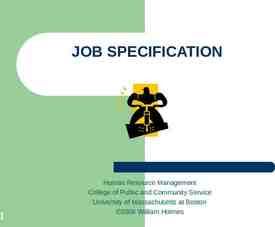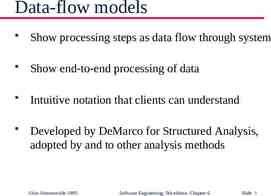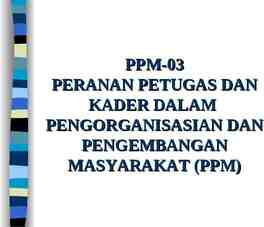Nutritional Management of Traumatic Brain Injury Melissa Wolynec
49 Slides899.86 KB

Nutritional Management of Traumatic Brain Injury Melissa Wolynec Aramark Dietetic Intern February 13, 2012

The Patient 24 year old male Admitted to ICU status post assault Intoxicated upon admission Intubated for airway protection and combativeness NG tube in place Propofol drip for sedation

The Patient Medically Bilateral frontal contusions Subarachnoid hemorrhage Left temporal contusions Swelling of brain Monitored with daily CT scans

Patient History No previous medical history Alcohol user No drug or tobacco use Appeared well nourished, stable weight Appetite prior to admission unknown No home medications

Patient Weight Admission Weight: 71.1 kg BMI: 20.6 86% IBW

Patient Nutrient Needs Penn State Critical Non-Obese Formula Stress Factors 1.2 – 1.4 2,381 to 2,778 kcal 104 to 139 gm protein (1.5 to 2.0 gm/kg) 2,079 to 2,772 mL fluid Fed via NG tube using Glucerna 1.5

The Injury – Traumatic Brain Injury (TBI) Sudden trauma causing damage to brain Head violently hits object Bump, blow, jolt, fall Object pierces through skill into brain Bullet May experience loss of consciousness or coma

The Injury, Contd. Mild TBI Temporary dysfunction of brain cells Serious TBI Bruising, torn tissues, bleeding, physical damages to brain

Symptoms of Severe TBI Increase in Sleep Clear Liquid from Ears or Nose Loss of Bladder Control Symptoms Dilated Pupils Slurred Speech Agitation / Combativeness Seizures Weakness / Numbness

Complications Attention Depression, Anxiety Memory TBI Impaired perception and touch Hearing and vision loss Impaired coordination and balance Extremity Weakness

Primary vs. Secondary Damage Primary Damage Intracranial hypertension Increased cerebrospinal fluid Secondary Damage Brain swelling Damage to brain cells

About TBI Ebb, or Initial Phase Peaks at 48 to 72 hours Subsides after 3 to 4 days Decreased metabolism, temperature, cardiac output, energy expenditure Flow, or Secondary Phase Increased metabolism and catabolism Last few days to few weeks

Metabolic Alterations Hormonal changes Release of cortisol, epinephrine and norepinephrine Changes in cellular metabolism Increased energy expenditure, oxygen consumption Cerebral and Systemic Inflammatory Response Swelling

Metabolic Alterations Contd. Increased Basal Metabolism Oxygen Consumption Glycogenolysis Hyperglycemia Results in muscle wasting

Evidenced Based Nutrition – Early Nutrition Database, 24 Level I and II trauma centers Arrival 24 hours after injury Glasgow Coma Score (GSC) 9 Exclusions: Subarachnoid hemorrhage secondary to aneurysm or stroke GCS 3-4 Fixed, dilated pupils Hartl R, Gerber L, Ni Q, Ghajar J. Effect of Early Nutrition on Deaths Due to Severe Traumatic Brain Injury. Journal of Neurosurgery. 2008;109:50-56.

Early Nutrition, Contd. Energy requirements estimated at 25 kcal/kg/day Mortality: death within 2 weeks after TBI Initial: 1,818 patients, Final:1,261 patients 61% began feeding Days 1-3 5% never fed over 7 days 62% never met 25 kcal/kg/day goal Hartl R, Gerber L, Ni Q, Ghajar J. Effect of Early Nutrition on Deaths Due to Severe Traumatic Brain Injury. Journal of Neurosurgery. 2008;109:50-56.

Early Nutrition, Contd. Two week mortality higher if not fed within 5 to 7 days Two week mortality highest in patients never fed Mortality rate significantly decreased with increased nutritional level Hartl R, Gerber L, Ni Q, Ghajar J. Effect of Early Nutrition on Deaths Due to Severe Traumatic Brain Injury. Journal of Neurosurgery. 2008;109:50-56.

Early Nutrition, Contd. Increased mortality with prolonged feeds 2.1x more likely if no feeds for 5 days 4.1x more likely if no feeds for 7 days Every 10 kcal/kg decrease within 5 to 7 days resulted 30-40% increased mortality risk Hartl R, Gerber L, Ni Q, Ghajar J. Effect of Early Nutrition on Deaths Due to Severe Traumatic Brain Injury. Journal of Neurosurgery. 2008;109:50-56.

Evidence Based Nutrition – Enteral Support 71 patients 72 hours in ICU TBI Intracranial Hemorrhage Subarachnoid Hemorrhage Brain Tumor GCS 3 Zarbock S, Steinke D, Hatton J, Magnuson B, Smith K, Cook A. Successful Enteral Nutritional Support in the Neurocritical Care Unit. Neurocritical Care.2008;9:210-216.

Enteral Support, Contd. Compared severity of neurologic illness to caloric intake Mild: GCS 11 Moderate: GCS 8-11 Severe GCS 4-7 Relationship between severity of neurologic illness and caloric intake? Zarbock S, Steinke D, Hatton J, Magnuson B, Smith K, Cook A. Successful Enteral Nutritional Support in the Neurocritical Care Unit. Neurocritical Care.2008;9:210-216.

Enteral Support, Contd. GCS did not affect % caloric intake Delays in meeting caloric goals Delay in initiation of feeds Delay in tube placement verification Orders for enteral Initiate nutrition, obtain goal rate If residuals, decrease rate Zarbock S, Steinke D, Hatton J, Magnuson B, Smith K, Cook A. Successful Enteral Nutritional Support in the Neurocritical Care Unit. Neurocritical Care.2008;9:210-216.

Evidence Based Nutrition – 6 Month Outcome 88 patients 24 hours post TBI GCS 4-8 Hospitalized 1 week All received standard care for trauma Dhandapani SS, Manju M, Sharma BS, Mahaparta AK. Clinical Malnutrition in severe traumatic brain injury: Factors associated and outcome at 6 months. Indian Journal of Neurotrauma. 2007;4(1):35-39.

6 Month Outcome, Contd. Enteral or by mouth nutrition Initiated as soon as possible Gradually increased to goal as tolerated GCS assessed at 3 and 6 months Good recovery/moderate disability – Favorable Persistent vegetative state or death – Unfavorable Dhandapani SS, Manju M, Sharma BS, Mahaparta AK. Clinical Malnutrition in severe traumatic brain injury: Factors associated and outcome at 6 months. Indian Journal of Neurotrauma. 2007;4(1):35-39.

6 Month Outcome, Contd. 94% patients fed after 7 days, malnourished Early feeding, 54% malnourished Unfavorable outcome in 30 of 37 with clinical malnutrition Unfavorable outcome in 3 of 15 with no clinical malnutrition Dhandapani SS, Manju M, Sharma BS, Mahaparta AK. Clinical Malnutrition in severe traumatic brain injury: Factors associated and outcome at 6 months. Indian Journal of Neurotrauma. 2007;4(1):35-39.

6 Month Outcome, Contd. 40% mortality in malnourished 11% mortality in non-malnourished TBI most common cause of death and disability in young people Dhandapani SS, Manju M, Sharma BS, Mahaparta AK. Clinical Malnutrition in severe traumatic brain injury: Factors associated and outcome at 6 months. Indian Journal of Neurotrauma. 2007;4(1):35-39.

TBI Complications – Intracranial Pressure Increases due to increase in cerebrospinal fluid Damages brain by restricting blood flow Methods to alleviate pressure: Ventriculostomy with IVC Osmotic Diuretic, Mannitol Hypertonic Saline Solution Medically Induced Coma, Pentobarbital

Intracranial Pressure, Sodium Maintained between 140 and 150 mg/dl Hypernatremia used to reduce cerebral swelling 2% Saline Solution administered

Hospital, Day 4 IVC drain placed Pentobarbital coma initiated Cooling blanket initiated

Macronutrient Needs – Pentobarbital Coma Decreased macronutrient needs due to Pentobarbital Penn-State Critical Non-Obese Formula Stress Factors 0.8 to 1.0 1,623 to 2,029 kcal 71-85 gm protein (1.0 – 1.2 gm/kg) 2,133 mL fluid

TBI Complications – Gastric Emptying Causes delays in gastric emptying Pentobarbital reduces gastric emptying Closely monitor residuals Possible post pyloric feeds if needed

Hospital, Day 8 Patients temperature spiked Hypothermia Protocol Initiated Body temperature decreased to 33 C

Micronutrient Needs – Pentobarbital Coma and Hypothermia Protocol Decreased temperature further reduced macronutrient needs Penn-State Critical Non-Obese Formula Stress Factors 0.9 to 1.0 1,125 to 1,250 kcal 71-92 gm protein (1.0–1.3 gm/kg) 2,133 mL fluid

Hospital, Day 12 Hospital shortage of Pentobarbital Patient changed to Propofol @ 85 ml/hr Day 13 – Pentobarbital resumed

Hospital, Day 17 PEG and tracheostomy placed Hypothermia Protocol Discontinued Temperature increased to 37.1 C Intracranial pressure improved Pentobarbital discontinued Precedex started

Micronutrient Needs – D/c Coma and Hypothermia Protocol Mild weight reduction Increased macronutrient needs Penn State Critical Non-Obese Formula Stress Factors 1.0 to 1.2 1,992 to 2,390 kcal 107 to 142 gm protein (1.5–2.0 gm/kg) 2,133 to 2,844 mL fluid

Hospital, Day 23 - 27 Day 23 – Cerebral edema improving Intracranial pressure resolving Clamping trials to begin Day 26 – IVC drain removed Day 27 – Seizures due to drop in Sodium

Weight Status Weight 59.9 kg 11.2 kg wt loss since admission BMI 17.6 69% Ideal Body Weight Increased Kcal and needs Protein

Micronutrient Needs – Severe Weight Loss Penn State Critical Non-Obese Formula Stress Factors 1.3 to 1.5 2,625 to 3,029 kcal 118 to 148 gm protein (2.0 to 2.5 gm/kg) 2,133 to 2,844 mL fluid Patient fed using Two Cal HN

Hospital Day, 34 Patient discharged to Kernan rehabilitation facility

Why Nutrition? Nutrition within 5-7 days after injury reduces mortality Early nutrition prevents long term malnutrition Protects brain by providing large amounts of energy during hyperglycolysis and hyperemia

Nutrition Within 1 Week Associated with reduction in 2 week mortality Helps meet needs from hypermetabolism, increased protein needs Prevents loss of protein and glycogen stores Postponing can result in malnutrition

Long Term Outcomes Malnutrition after TBI associated with malnutrition 6 months later Lower GCS, protein and albumin upon admission associated with greater risk of malnutrition Delayed nutrition, risk of malnutrition increases Rapid depletion of glycogen and protein stores

PES Statement, Intervention, Goal Problem: Increased nutrient needs (NC – 5.1) Etiology: Head Trauma Sign/Symptoms: CT scan showing swelling, bifrontal contusions, subarachnoid hemorrhage and left temporal contusions. Interventions #1. Insert enteral feeding tube (ND-2.1.2) Recommend to insert NG tube to allow for tube feeding of intubated patient. #2. Formula/Solution (ND-2.1.1) Recommend a calorically dense formula to provide adequate calories and protein. Goal Short-term: To initiate tube feeding. To tolerate tube feeding at goal rate. Long-term: To transition to solid food once extubated.

PES Statement, Intervention, Goal Problem: Decreased Nutrient Needs (NI – 5.4) Etiology: Patient with medically induced coma, hypothermia protocol Sign/Symptoms: Currently on pentobarbital with temperature of 33 C. Interventions #1. Formula/Solution (ND-2.1.1) Recommend to reduce tube feeding rate based on recalculated needs to a lower rate, providing fewer calories and protein. Goal Short-term: To decrease tube feeding rate. To tolerate tube feeding at goal rate. Long-term: To maintain weight and protein stores.

PES Statement, Intervention, Goal Problem: Swallowing difficulty (NI – 1.1) Etiology: Patient currently intubated Sign/Symptoms: Need for tube feeding. Interventions #1. Insert enteral feeding tube (ND-2.1.2) Recommend to insert NG tube to allow for tube feeding of intubated patient. Goal Short-term: To initiate tube feeding. To tolerate tube feeding at goal rate. Long-term: If not extubated, to obtain a PEG tube.

Monitoring Tube feeding tolerance through monitoring residuals Energy and protein intake through formula selection Monitor daily weights Prealbumin levels

TBI Facts 20-50% of cases result in death 52,000 people die each year 85% die within first two weeks

Why Is Nutrition So Important? Maintains energy balance and cerebral hemostasis Associated with 2 week mortality reduction Prevents malnutrition Better outcomes of survival and disability Helps prevent muscle wasting and weight loss

Where Is Our Patient Now? Discharged from Kernan weeks after admission Recently visited ICU at Sinai Hospital Walks, Talks, Eats! Plans to attend outpatient rehab group at Sinai






